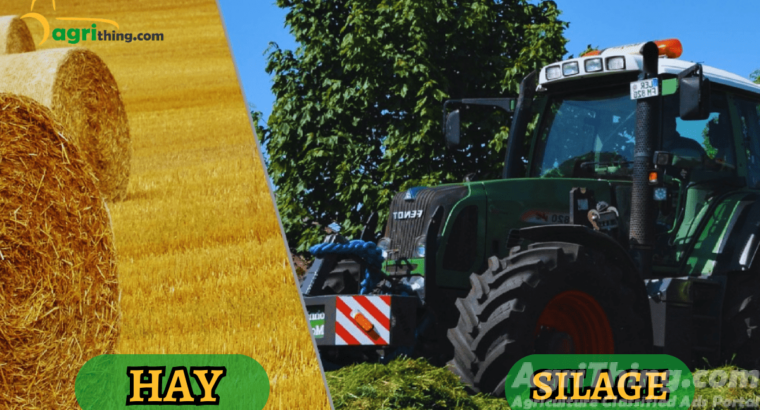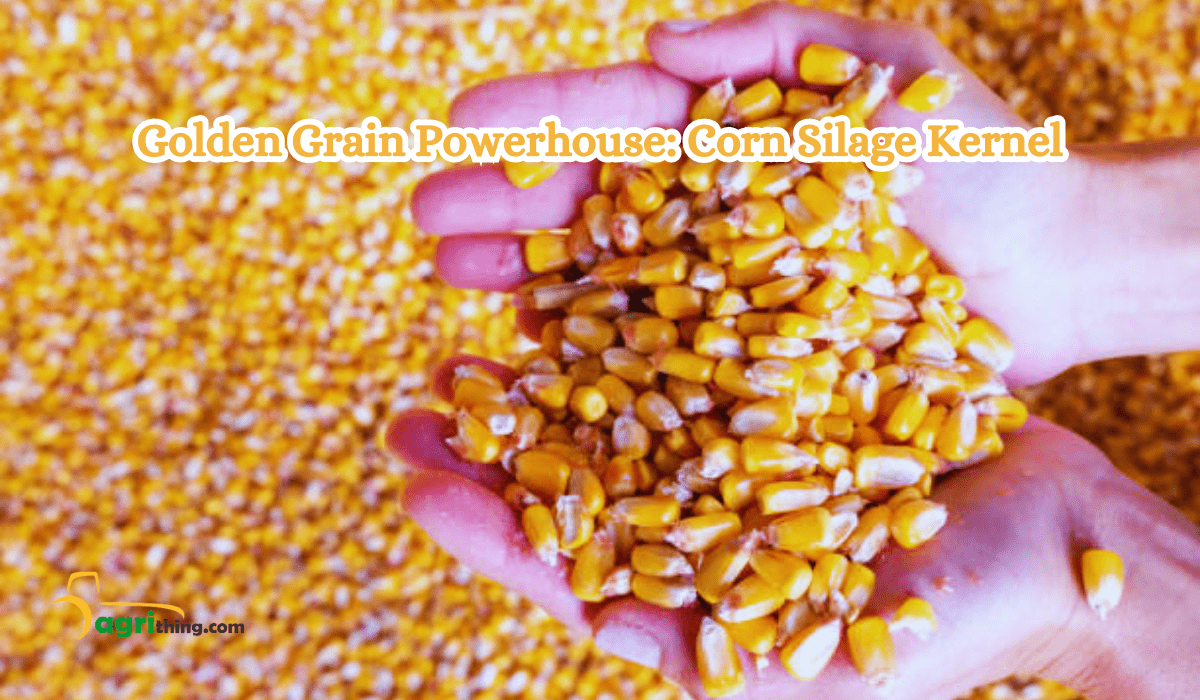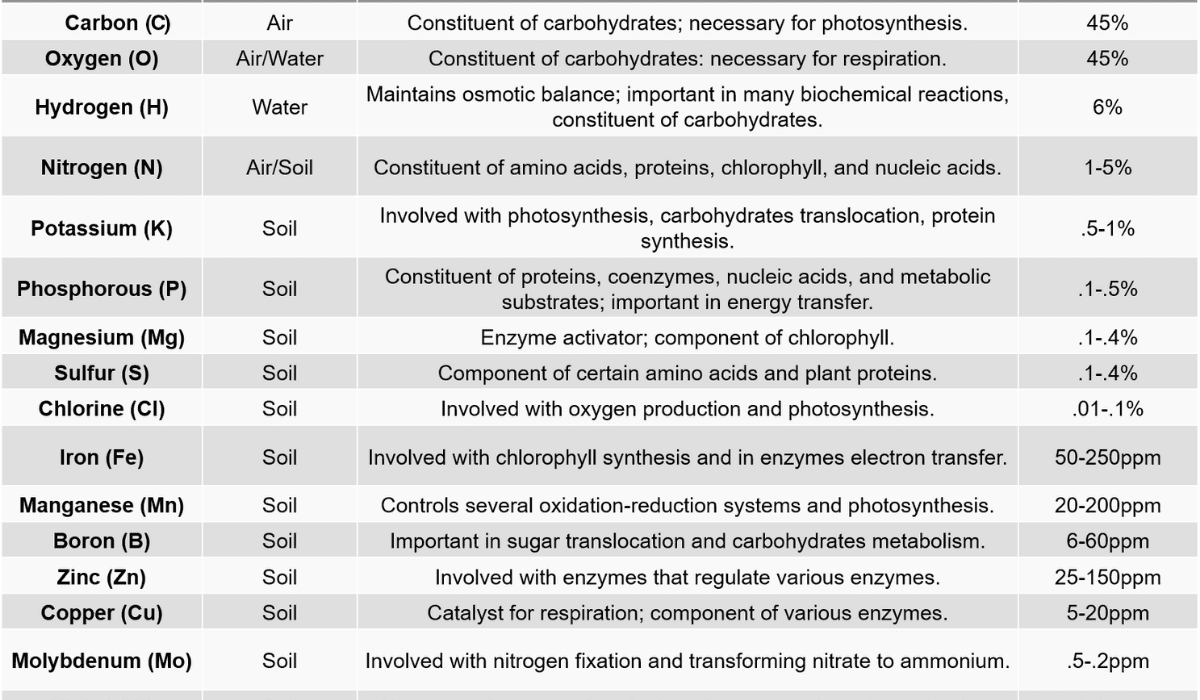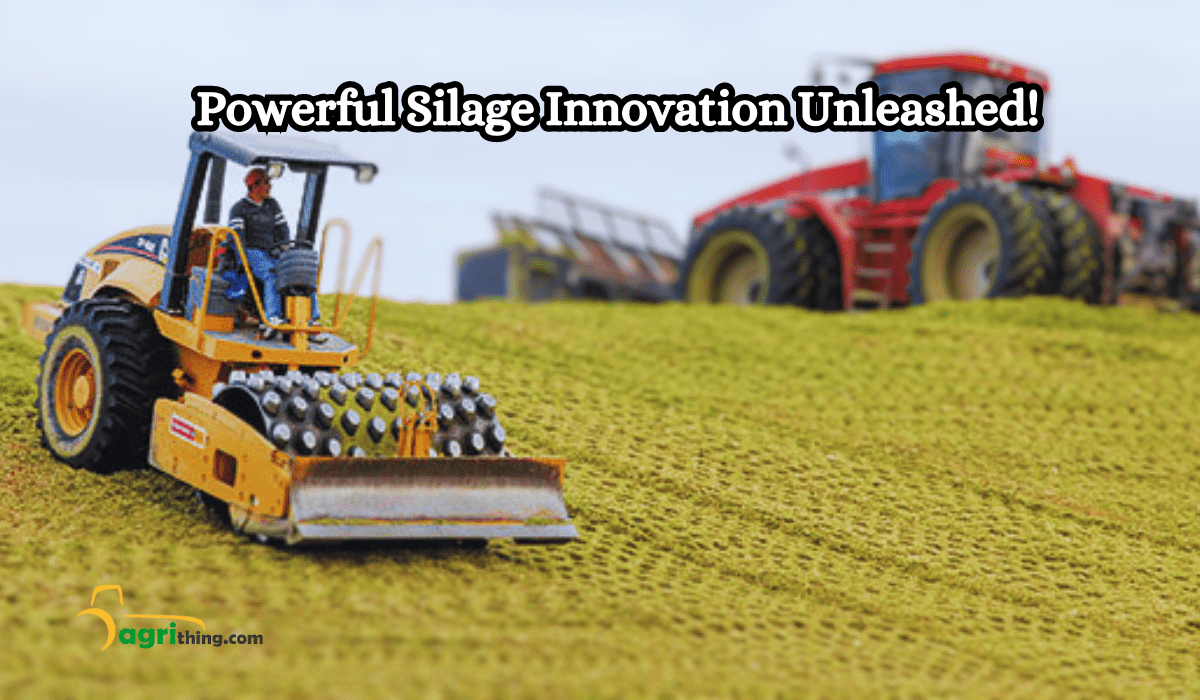Corn Silage and Haylage: Discover the Secret to Thriving Animals

When farmers need to feed their livestock, they have different choices. Two common options are corn silage and haylage, which are both types of food that give animals important nutrients. It’s important for farmers to know the parallels and differences between corn silage and haylage, so they can decide which one is best for their farm. In this article, we will look at the qualities, advantages, and things to think about when choosing between corn silage and haylage.
Table of Contents
What is Corn Silage?
Corn silage is a feed made from whole corn plants that are chopped, packed, and fermented in silos. It is a highly digestible forage, rich in energy and essential nutrients. Corn silage is typically harvested when the corn plant is at the optimal moisture level, ensuring proper fermentation and preservation.
Benefits of Corn Silage
High energy content: Corn silage provides a concentrated source of energy, making it suitable for high-producing dairy cows and beef cattle.
Great in nutrients:
It contains nutrients such as carbohydrates, proteins, and minerals, promoting healthy growth and milk production.
Versatility:
Corn silage can be easily mixed into a well-balanced diet for various livestock species.
Consistent quality:
When properly harvested and stored, corn silage offers uniform nutritional quality throughout the year.
What is Haylage?
Haylage, which is also called grass silage, is created by cutting grass or other forage crops and then immediately storing them without drying. The forage is tightly wrapped in plastic, creating an airtight environment for fermentation to occur. This process helps retain the nutrients in the forage and reduces the amount of dry matter lost.
Benefits of Haylage
Improved palatability: Haylage tends to be more appealing to livestock than dry hay due to its moisture content and enhanced aroma.
Higher nutrient retention: The ensiling process helps retain a greater portion of the forage’s original nutrient content, resulting in improved feed efficiency.
Reduced risk of mold and dust: The airtight wrapping minimizes exposure to external factors, reducing the chance of decay development and dust contamination.
Enhanced digestibility: Haylage’s fermentation process breaks down complex carbohydrates, making it easier for animals to digest and absorb nutrients.
Corn Silage vs. Haylage: Differences and Similarities
| Nutritional Factors | Corn Silage | Haylage |
|---|---|---|
| Moisture Content | High | Moderate To Low |
| Energy Content | High | Moderate |
| Protein Content | Moderate to High | Moderate |
| Fiber Content | Moderate to Low | High |
| Fat Content | Low | Low |
| Mineral Content | Moderate | Moderate |
| Digestibility | Moderate | Moderate To High |
| pH Level | Slightly Acidic | Slightly Acidic |
| Vitamin Content | Moderate | Moderate |
Nutritional Content
While both corn silage and haylage are nutritious forages, they differ in their nutritional composition. Corn silage tends to have higher energy content and lower fiber content compared to haylage. On the other hand, haylage contains more fiber, providing additional roughage to the animal’s diet.
Fermentation Process
Corn silage and haylage go through different fermentation processes. Corn silage ferments using lactic acid, while haylage undergoes both lactic and acetic acid fermentation. These differences in fermentation can affect how easily the forages are digested and how stable they are over time.
Storage and Shelf Life
Corn silage is usually stored in tall silos or wide bunkers, while haylage is stored in bales wrapped in plastic or stacked with plastic covering. The storage method chosen depends on the farm’s setup and how much feed is needed. When stored correctly, both corn silage and haylage can last a long time, giving farmers a year-round supply of feed for their animals.
Factors to Consider
Farming Conditions
Farmers need to consider their farming conditions when deciding between corn silage and haylage. Factors such as climate, soil type, available land, and equipment play a role in determining the suitability of each forage option.
Livestock Requirements
When deciding between corn silage and haylage, it’s important to think about the nutritional needs of the animals. Different types of animals and different stages of production have different requirements for nutrients. By studying the animals’ dietary needs and getting advice from a nutritionist, you can figure out which forage option is best for them.
Comparison Between Corn silage and haylage
| Aspect | Corn Silage | Haylage |
|---|---|---|
| Definition | A type of forage made from whole corn plants | A type of forage made from grass or legumes |
| Production | Harvested when corn plants are mature and the grain is not fully developed | Harvested when grass or legumes are in their optimal growth stage |
| Nutrient Content | High energy and moderate protein content | Moderate energy and variable protein content depending on the forage used |
| Digestibility | Highly digestible due to the fermentation process | Digestibility depends on the forage used, generally lower than corn silage |
| Moisture Content | Typically higher moisture content (about 65-70%) | Moisture content varies but is generally lower than corn silage |
| Fermentation | Fermented in an anaerobic environment | Fermented in an anaerobic environment |
| Fermentation Time | Requires several weeks of fermentation before it can be fed to livestock | Can be ready for feeding in a shorter fermentation period |
| Storage | Can be stored in silos or bunkers | Can be stored in silos or wrapped bales |
| Feeding | Fed to dairy cattle and other livestock as a source of energy and fiber | Fed to livestock as a source of forage and fiber |
| Advantages | High energy content, good for milk production | Suitable for horses and animals with lower energy requirements |
| Disadvantages | Requires specialized equipment for harvest and storage | Requires careful monitoring of moisture levels to prevent spoilage |
Making the Right Choice
Using corn silage or haylage depends on what the farm needs and wants. Things like how much you want to make, how big the packs are, what nutrients are needed, and what resources are available should help you make a choice. It’s a good idea to talk to a nutritionist or expert in farming to get advice that fits the farm’s situation.
Conclusion
Both corn silage and haylage are important choices for farmers who raise livestock. It’s important for farmers to know the variations in nutritional content, fermentation processes, and storage methods to make a smart choice. By considering their farming conditions and the needs of their animals, farmers can pick the best forage option for their farms. This helps keep their animals healthy and productive.
Frequently Asked Questions (FAQ’s)
Can corn silage and haylage be fed to all types of livestock?
Corn silage and haylage can be fed to different types of livestock, such as dairy cows, beef cattle, horses, and goats. However, it’s important to remember that each species has its own unique nutritional needs. It’s necessary to consider these requirements and make adjustments to the feeding plan accordingly.
How long can corn silage and haylage be stored?
If stored correctly, both corn silage and haylage can stay fresh for a long time. Corn silage can last from a few months to a year, while haylage can remain usable for up to two years.
Is haylage more expensive to produce than corn silage?
The cost of producing haylage and corn silage can vary depending on factors such as labor, equipment, and forage quality. Generally, the cost of producing haylage may be slightly higher due to the additional steps involved in ensiling and wrapping the forage.
Can corn silage and haylage be used together in a feeding program?
Yes, corn silage and haylage can complement each other in a feeding program. Combining both forages can provide a balanced diet, combining the energy content of corn silage with the fiber content of haylage.
Is there a specific time of the year to harvest corn for silage?
The timing of harvesting corn silage depends on the desired moisture content of the plants. It’s usually done when the corn plants reach the right level of moisture, which can differ based on the region and the specific corn hybrid being used. Seeking advice from local agronomists or extension services can help determine the best time to harvest corn silage.
Related Articles
Want to purchase top-quality silage? Visit our Agricomplex website to explore our wide range of silage products.
People Also Asked
What is corn silage and haylage?
Corn silage is a type of forage made from whole corn plants. It is harvested when the plants are mature but before the grain fully develops. Haylage is a type of forage made from grass. It is harvested at an optimal growth stage and has a higher moisture content compared to dry hay.
Which one is more nutritious for livestock?
Corn silage is generally more nutritious for livestock compared to haylage. Haylage, on the other hand, has moderate energy content and variable protein levels depending on the forage used.
Can both corn silage and haylage be used as feed for dairy cows?
Yes, both corn silage and haylage can be used as feed for dairy cows. Corn silage is commonly included in dairy cow diets due to its high energy content. Haylage can also be part of dairy cow rations, providing fiber and nutrients.
How do you store corn silage and haylage?
Corn silage is typically stored in silos or bunkers. The chopped corn plants are packed tightly into the storage structure. The silo or bunker is then sealed to maintain proper conditions and prevent spoilage. Haylage is stored in a similar manner. It is often placed in silos or tightly wrapped in plastic bales to create an anaerobic environment.
Can corn silage and haylage be used for horses?
While corn silage and haylage can be fed to horses, they are not the most suitable options. Horses have specific dietary requirements, and their digestive systems are adapted for consuming primarily dry forage like hay or pasture.




Leave your comment